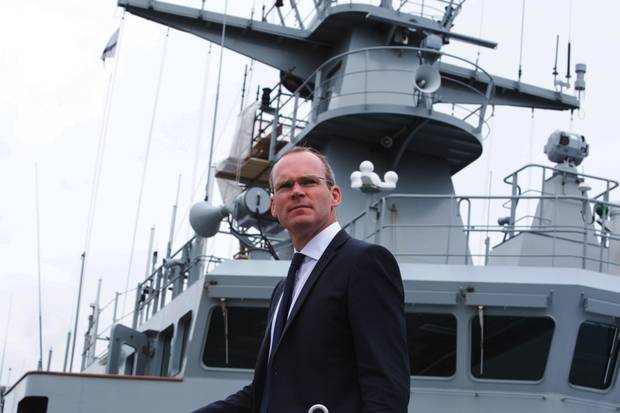In the late 1990s Latin American politics began a move to the Left with egalitarian governments coming to rule the majority of the region’s States. Gar Fitzpatrick talked to Barry Cannon, an Irish based expert on the region on whether this so-called ‘Pink Tide’ was receding and what that means for the Left globally.
From Hugo Chavez’s election as president of Venezuela in 1998 to his death in 2013 there was an increasing shift to the Left in Latin American politics. By 2014, ten left of centre governments were in office throughout the region, in what had become known as the “pink tide.”
These governments varied in the degree to which they deviated from the once dominate neoliberal economic model or challenged the United States’ influence in the region. However, all were elected on an egalitarian platform and raised living standards for the poor through social programmes. Venezuela, Bolivia and Ecuador drafted new constitutions enshrining social and environmental rights and used their wealth of natural resources to benefit the population rather than multinational companies.
Dr Barry Cannon of Maynooth University, County Kildare, notes the ‘pink tide’ did not “sweep all before it”. Mexico, Colombia and much of central America remained socially and electorally dominated by right wing parties. In Peru and Chile, nominally left-wing presidents implemented neoliberal policies. In his new book on the region’s politics, The Right in Latin America: Elite Power, Hegemony, and the Struggle for the State, Cannon analysis the conservative political forces which are now regaining control in many of the previously left-led States.
Cannon takes issue with the emphasis political science places on structured political parties. Most parties of the Right in Latin America lack any strong social base. There are exceptions such as ARENA in El Salvador or the UDI in Chile, but often right-wing parties have little presence beyond capital cities. They are top-down, personality driven vehicles for their leaders.
He sees Colombia as a prime example. In Colombia, the Left barely registers in electoral politics, but the governing parties of the right are disconnected from the mass of people. The fact that barely 40% of the electorate turned out to vote in the October 2016 referendum that would have ratified a peace accord to end five decades of war between the Colombian state and the Communist FARC guerillas “speaks volumes” of that diconnect. But, partly due to the continuing threat of paramilitary violence, this is not a disconnect the Left is able to take advantage of.
In his book, Cannon examines five sources of power, economic, political, ideological, military and transnational. These are key to understanding the influence of the Right and the strategies by which they assert their interests or defend themselves from the left-wing threat in the region. During 2016, these strategies became hard to ignore. In May 13 years of Workers’ Party (PT) government came to an end in Brazil with the start of impeachment proceedings against president Dilma Rousseff. This is an example of what Dr Cannon terms a “smart coup”, carried out with little or no bloodshed and a relative degree of popular and institutional legitimacy. Another example was the 2012 parliamentary coup against Paraguay’s left-wing president Fernando Lugo.
The PT never had a majority in parliament but relied on compromise and coalition. “They had to sell their soul to the right and big business,” says Cannon. They introduced welfare measures like the Bolsa Familia cash transfers, but “didn’t disturb the balance of power” or “renovate” the corrupt Brazilian political system. Their partners have now come back to “decapitate” the PT. Rouseff was replaced by her vice president, Michel Temer of the conservative PTSB. Temer has already said he will not stand for reelection, so does not need to worry about his popularity, seizing the opportunity to ram through privatisations and write neoliberalism into law with a twenty-year ban on budget deficits.
The military coup is still a weapon in the Right’s arsenal as seen in the successful 2009 coup against Manuel Zelaya in Honduras or the botched coup against Chavez in 2002. However, less vulgar methods like smart coups or regular constitutional methods are the order of the day. Since the transitions to democracy in the region there is a distaste for direct military rule and its associated human rights abuses. Coups tend to indicate instability which is bad for business. The ideal is to achieve elite “polyarchy” whereby votes take place and government changes hands but with policy not straying outside the neoliberal framework.
Elites may attempt to mobilise civil society in concert with media campaigns and transnational support, particularly moral and financial support
Where there is a need to combat the Left, elites may attempt to mobilise civil society in concert with media campaigns and transnational support, particularly moral and financial support from the United States. In Brazil, Cannon’s view is that grassroots social mobilisation and antipolitical protest movement in 2013, similar to the Spanish Indignados, was effectively co-opted by the right, setting the stage for the “smart coup”.
In Argentina in 2015, the Right has regained power through the ballot box. President Mauricio Macri has implemented a series of “anti-poor measures”, public sector lay-offs, subsidy cuts, public and transport fare increases. Data from the Catholic University of Venezuela shows poverty on the increase. Former US President, Barack Obama, wasted no time in visiting Argentina after Macri’s election and the IMF is back in Buenos Aires for the first time since 2005. But unlike Temer, electability matters to Macri and he cannot pursue such an alienating agenda.
Cannon’s “real fear” is that the resurgent right will leave the region “so deeply enmeshed in transnational trading binds” that future Left-wing governments will be hamstrung. Whatever the flaws of the Brazilian PT they “did not slavishly adhere to US policy prescriptions” and this opened some space in the region for alternative development models. The defeat of the proposed Free Trade Area of the Americas in 2005 was a high point for the ‘pink tide’. But Mexico, Colombia, Chile and Peru have already formed a neoliberal trading bloc, the Pacific Alliance. Cannon forsees an eventual “Anschluss” between this and the Brazilian-led trade bloc, MERCOSUR, even if the “democratic problem” means the goal can only be achieved little by little.
Venezuela pursued the most radical experiments of the ‘pink tide’, but is now “very much cornered” by political developments in the region and the critical economic situation internally. Cannon is critical of the government’s haphazard approach: “There were new ideas, about changing the productive economy, about food sovereignty but they weren’t implemented, or they were implemented half-heartedly, were improvised, with no attempt to monitor and improve.” President Maduro’s “only strategy” says Cannon “is to work in OPEC to reduce output” in order to raise oil prices internationally.
At their core, Venezuela’s problems are the same as other ‘pink tide’ countries. No Left government in Latin America achieved “take-off in production.” Their economies remain based on extractivism and the export of raw commodities and energy. Reveue from natural resources has rightly been used for the benefit of the poor and to expand the state. But the extractivist model runs in to conflict with environmental rights enshrined in new progressive constitutions and demanded by indigenous peoples in Ecuador and Bolivia. It also leaves social gains extremely vulnerable to boom and bust in commodity prices.
It would seem that Cannon’s studies indicate that if ‘socialism for the 21st century’ is ever to be more than a phrase, the left desperately needs to rise to these challenges.





